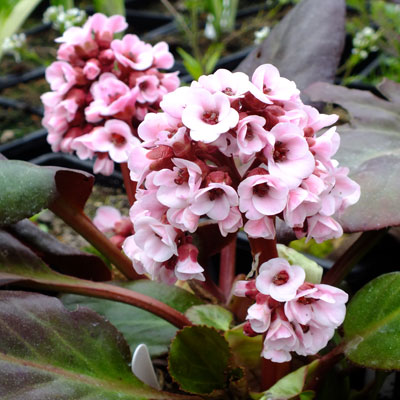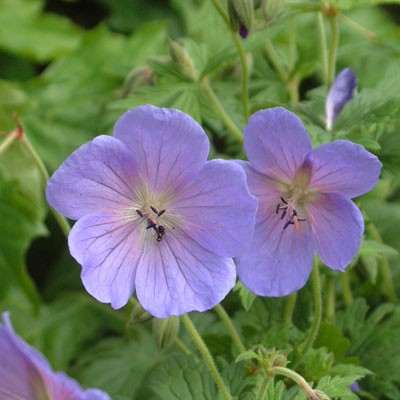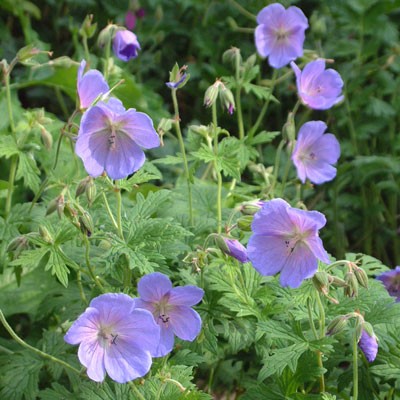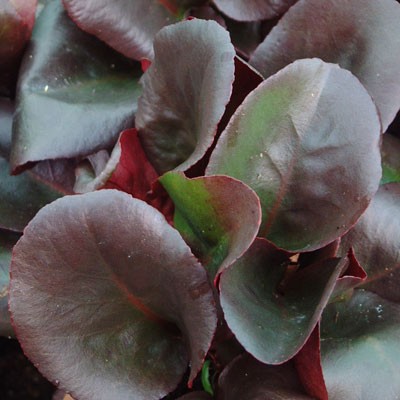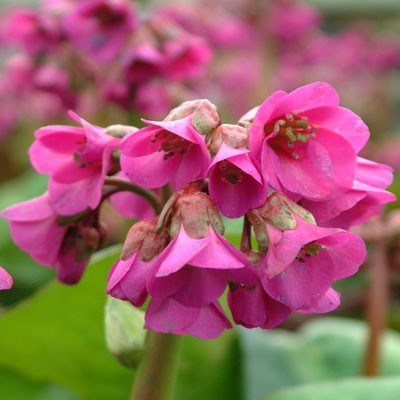Description
Bergenia ‘Bach’
Bergenia ‘Bach’ has lovely neat and glossy foliage, red flushed and bronze in Winter. From March to May huge, densely packed heads of palest pink flowers are produced which mature white and are dramatically offset by the red calyxes and stems. The flowering heads are particularly full and well rounded. One of Eric Smith’s hybrids, raised in 1972 at Hadspen House.
Bergenia are native of damp rocky woodland and meadows and in cultivation are remarkably easy to grow in either sun or light shade in anything but the most boggy or dry, hot sites.
They are valuable for their bold, glossy leaves that are, in most varieties, evergreen. Frequently they colour spectacularly in Autumn and Winter taking on rich red tones that make them a significant garden feature. In some cultivars and species, notably Bergenia ciliate, Bergenia stracheyi and Bergenia x spathulata, the larger leaves are often lost in colder weather. The lovely twists in the leaves and rich colouring make them excellent candidates for the flower arranger. They make excellent ground cover. They make excellent alternatives to Hosta on drier and windier sites.
The flowers are largely in the white to ruddy pink range, held in dense heads in Spring. Bergenia emiensis and its hybrids have recently brought more open heads of lax flowers into the mix. Flowering is better in plants grown in sites with more light and ample moisture.
Bergenia can be grown very successfully in pots and were once favourite edging plants with Gertrude Jekyll. They have been cultivated since the 17th Century when Bergenia cordifolia (from Siberia) was appreciated for its hairless rubbery green leaves and tolerance of both heat and cold.
Early breeding was undertaken by Mr T.Smith of Newry, using Bergenia cordifolia and Bergenia purpurascens. Whilst many of the original cultivars, praised by William Robinson, are now lost, breeding has continued by Arends and Klose and more recently by Eric Smith and Jim Archibald. It was during the Bergenia revival in the 19th that William Robinson selected the first dark purple variant.

















































